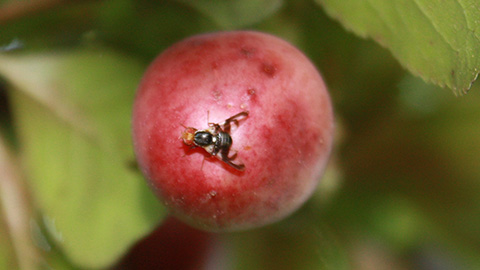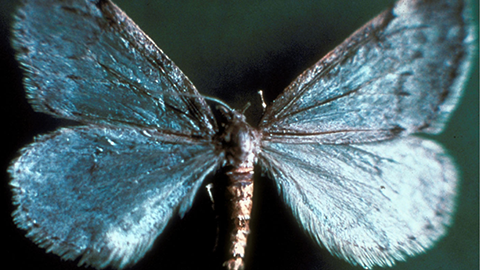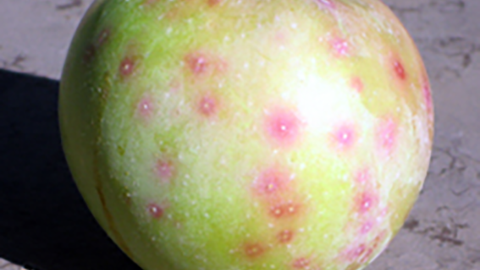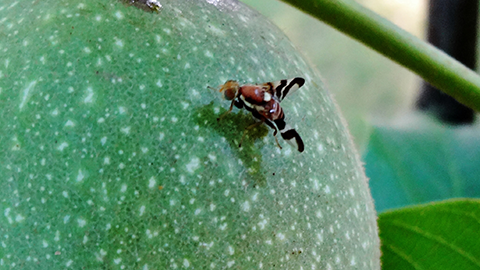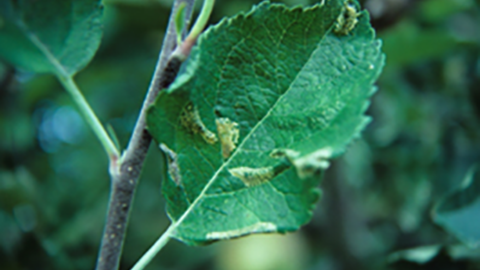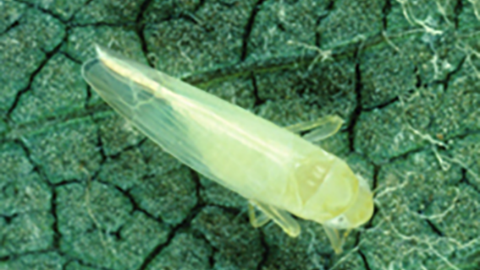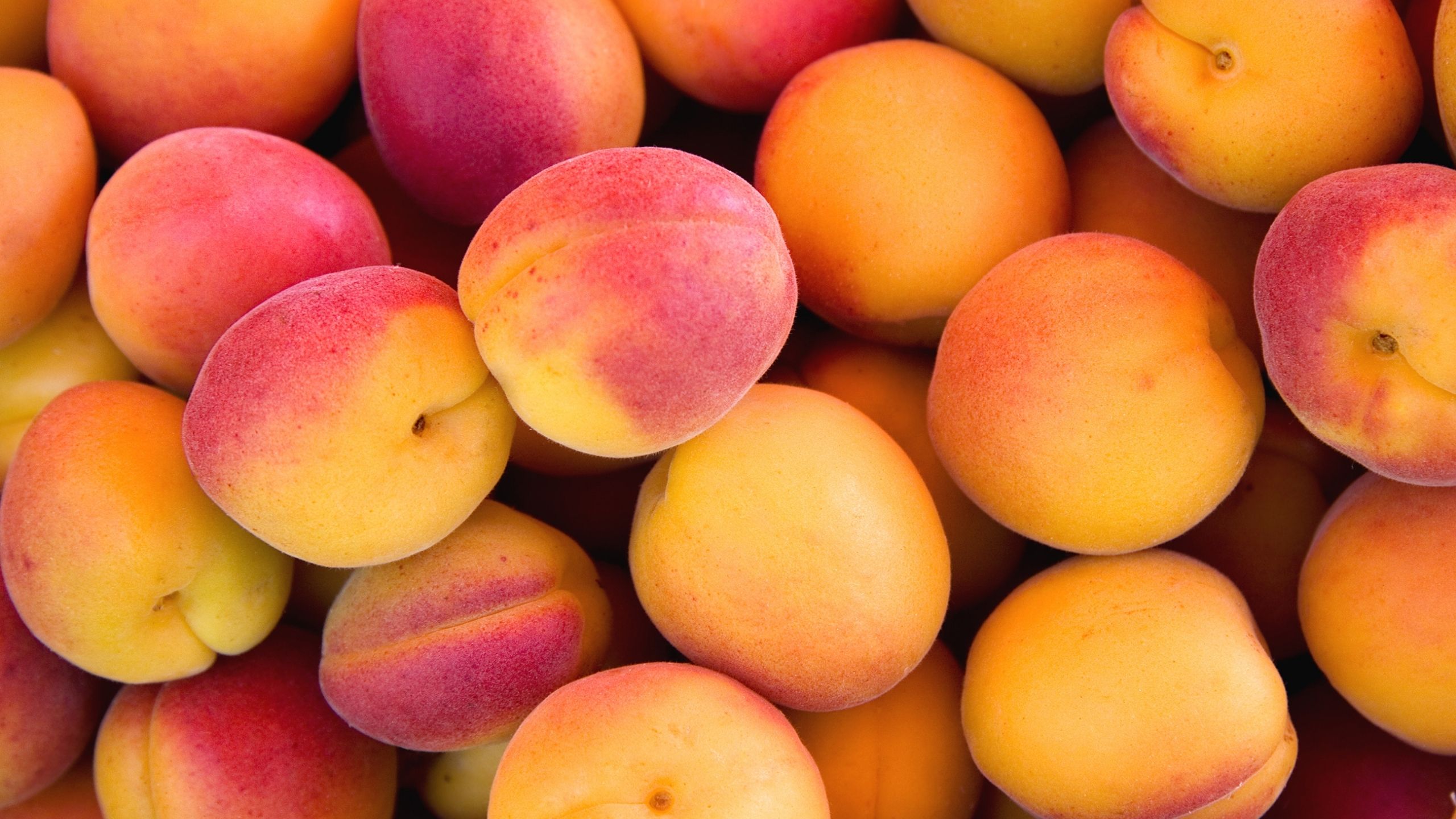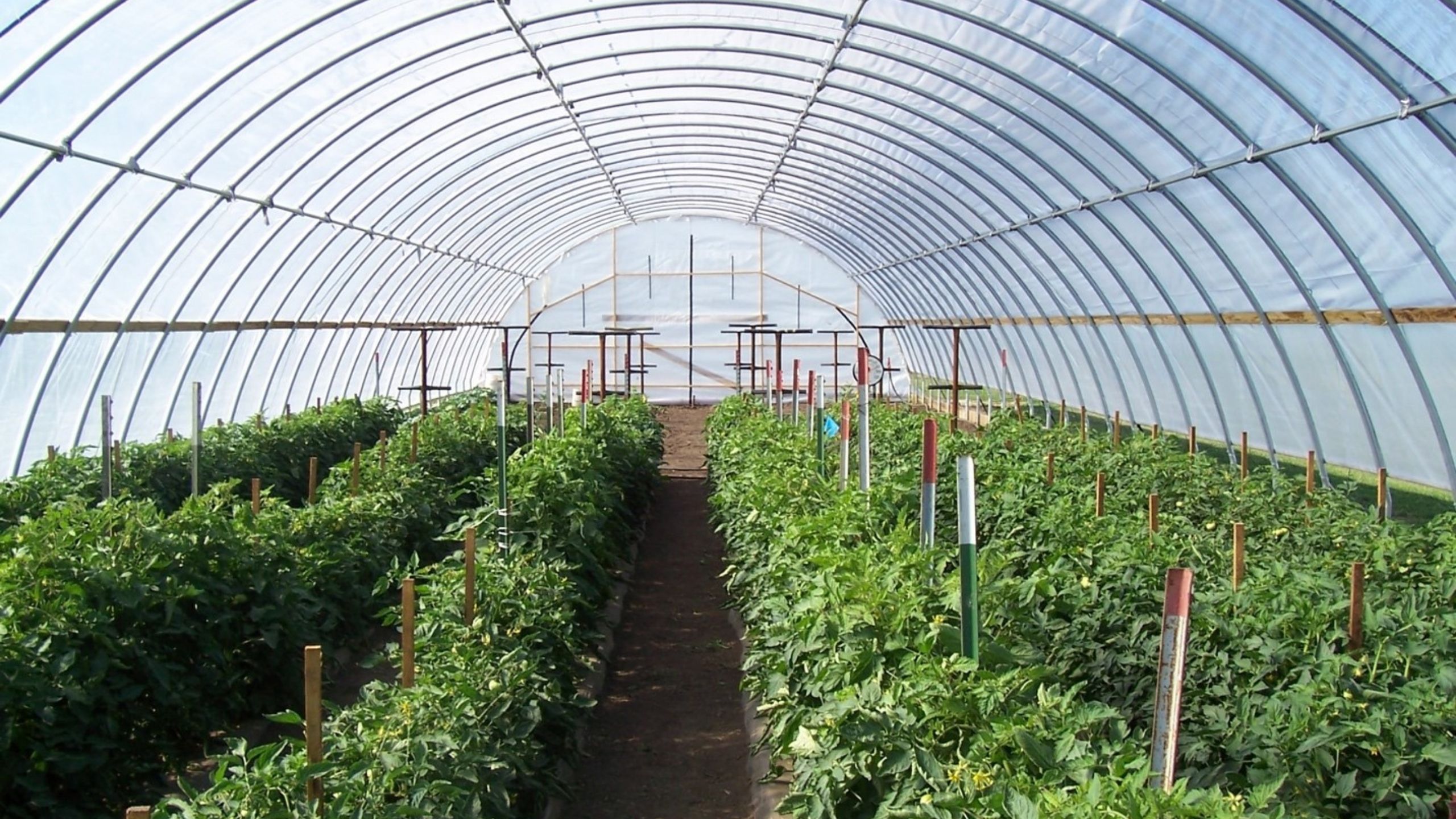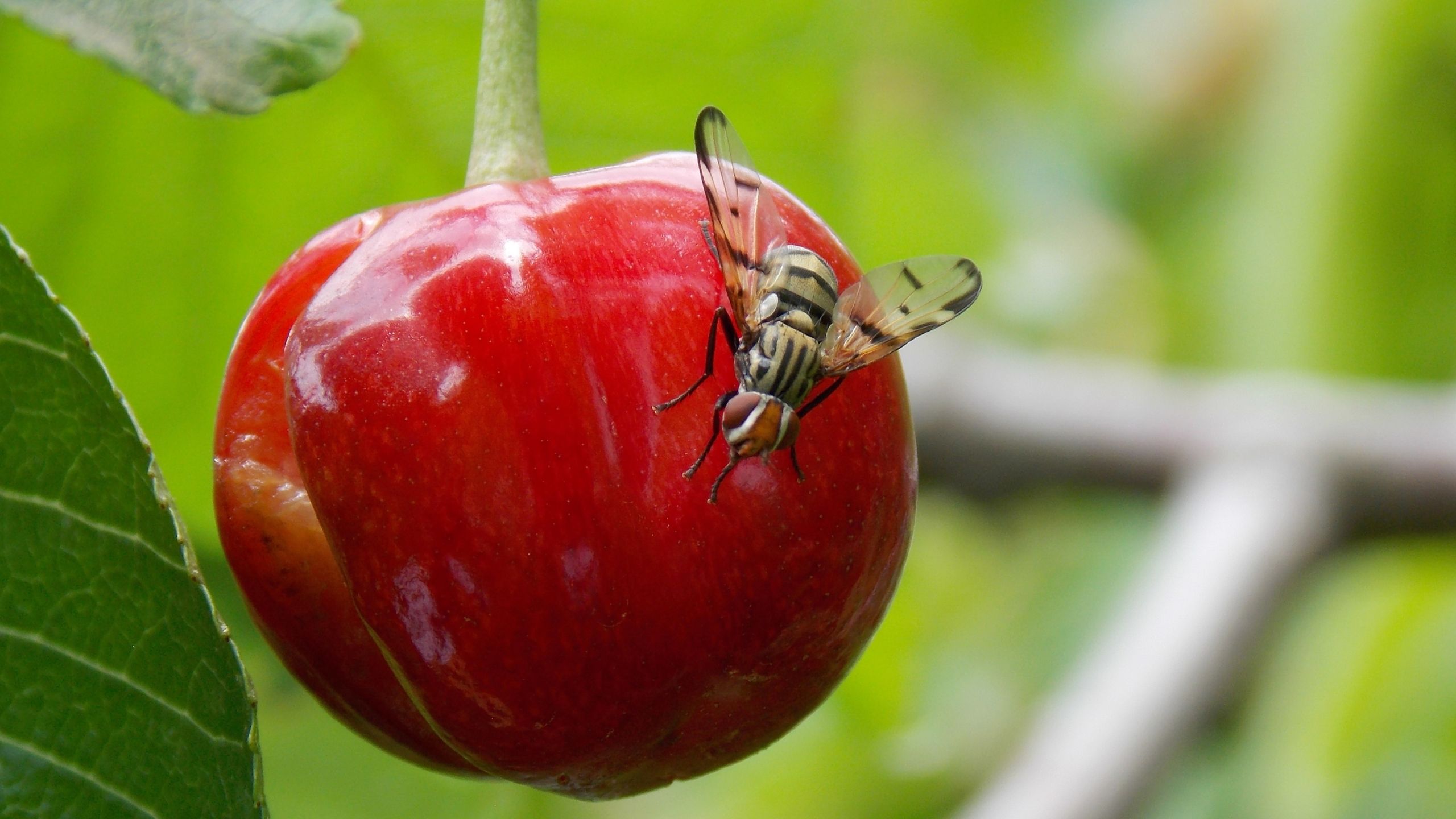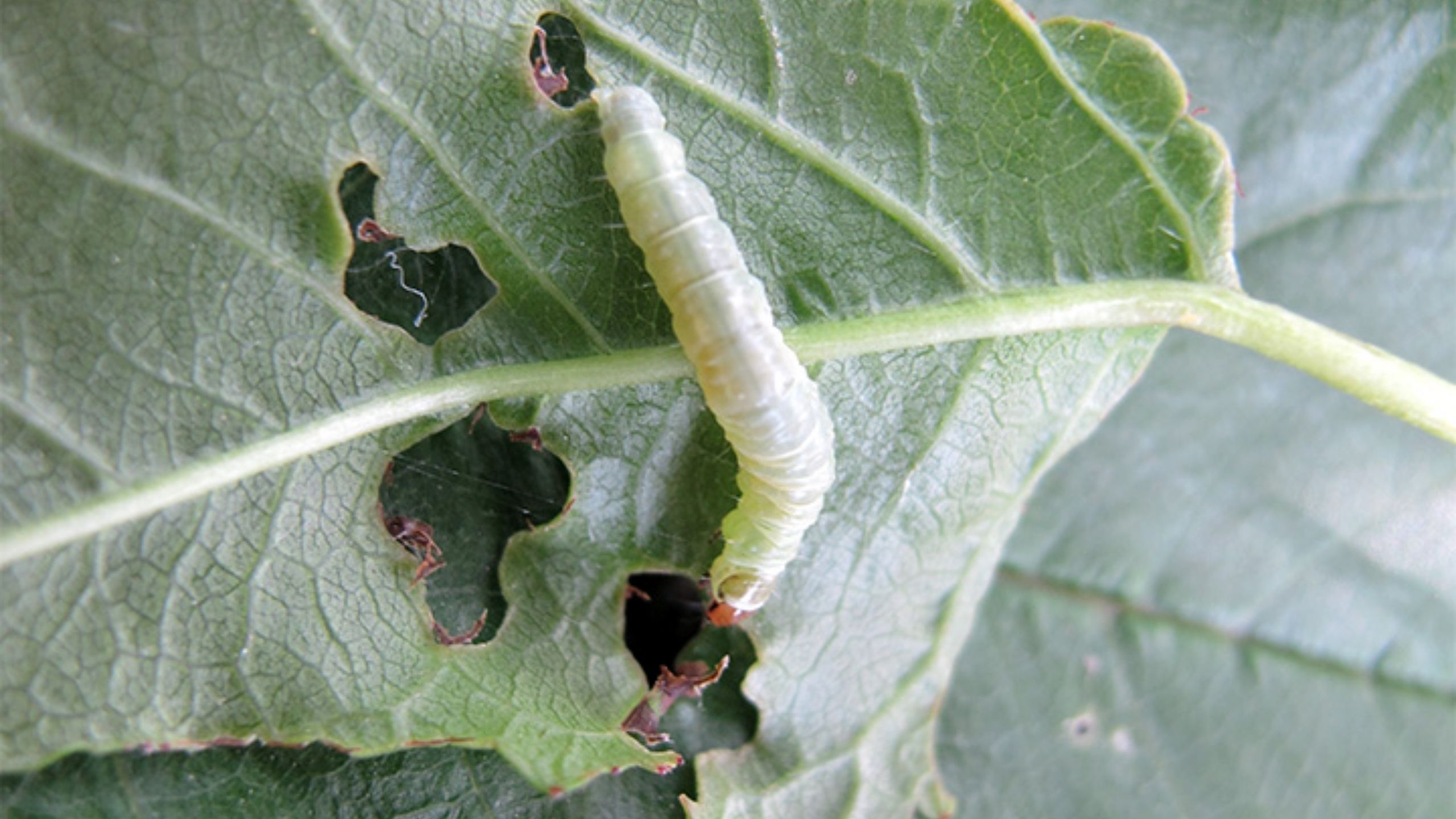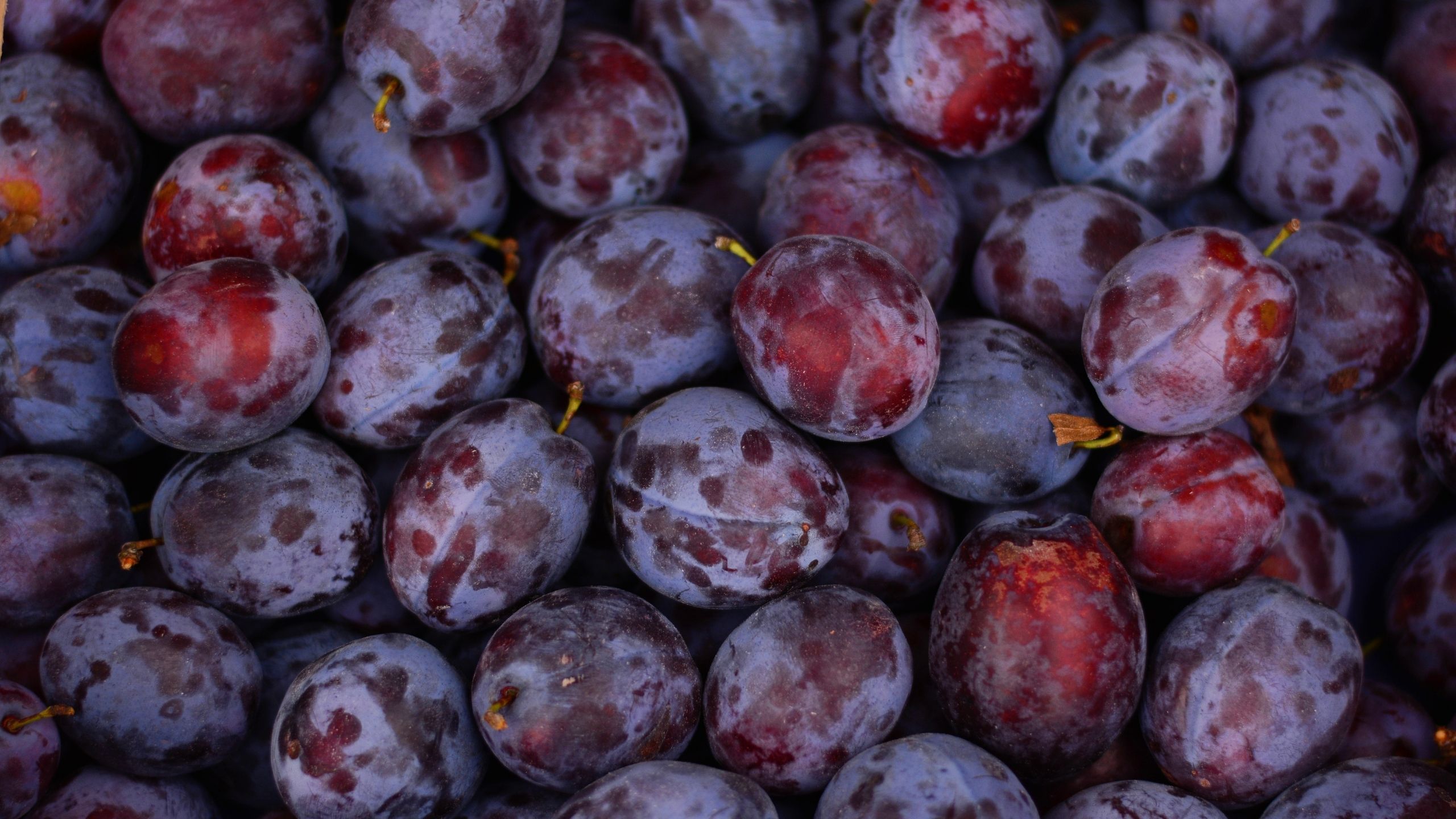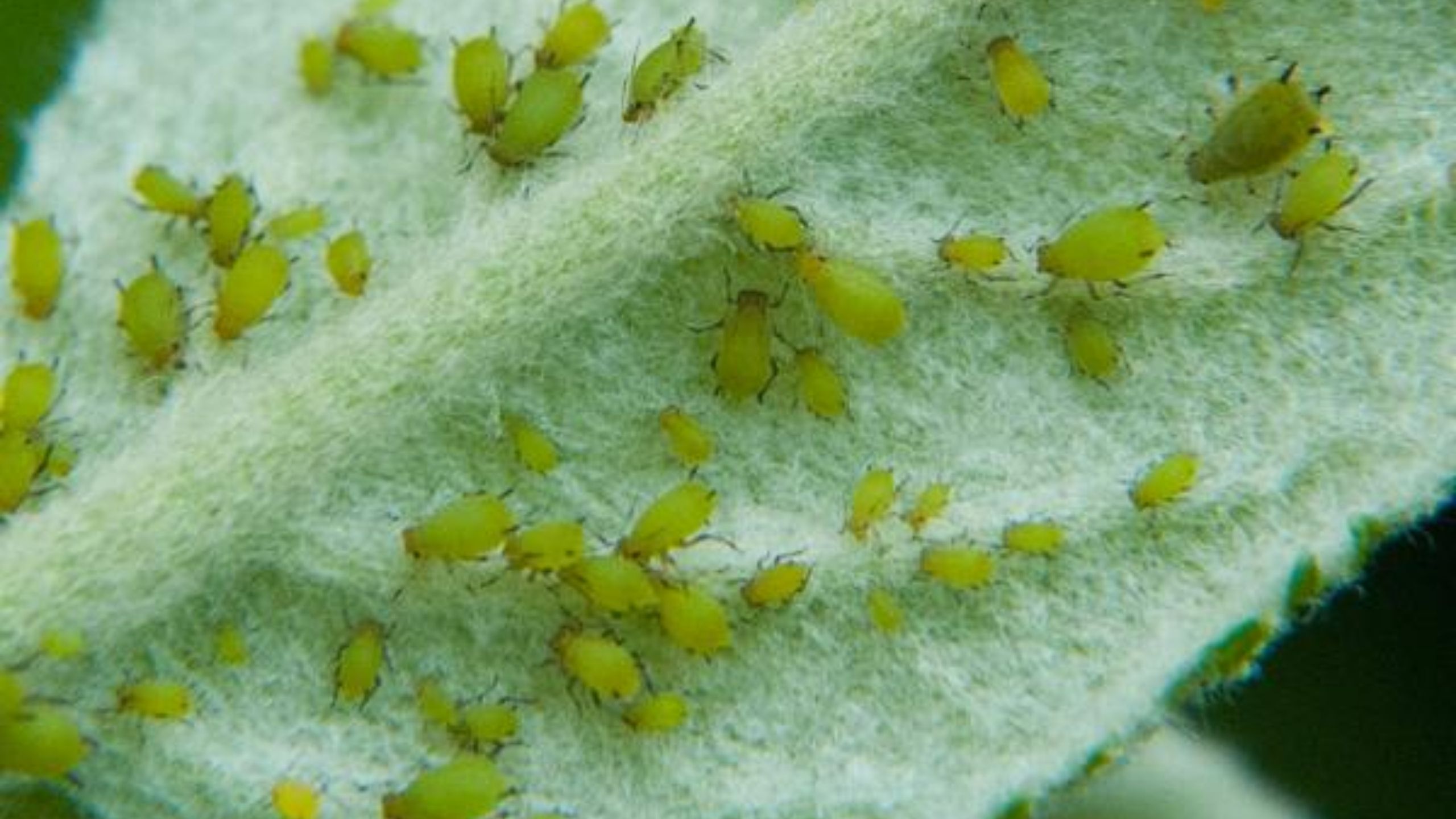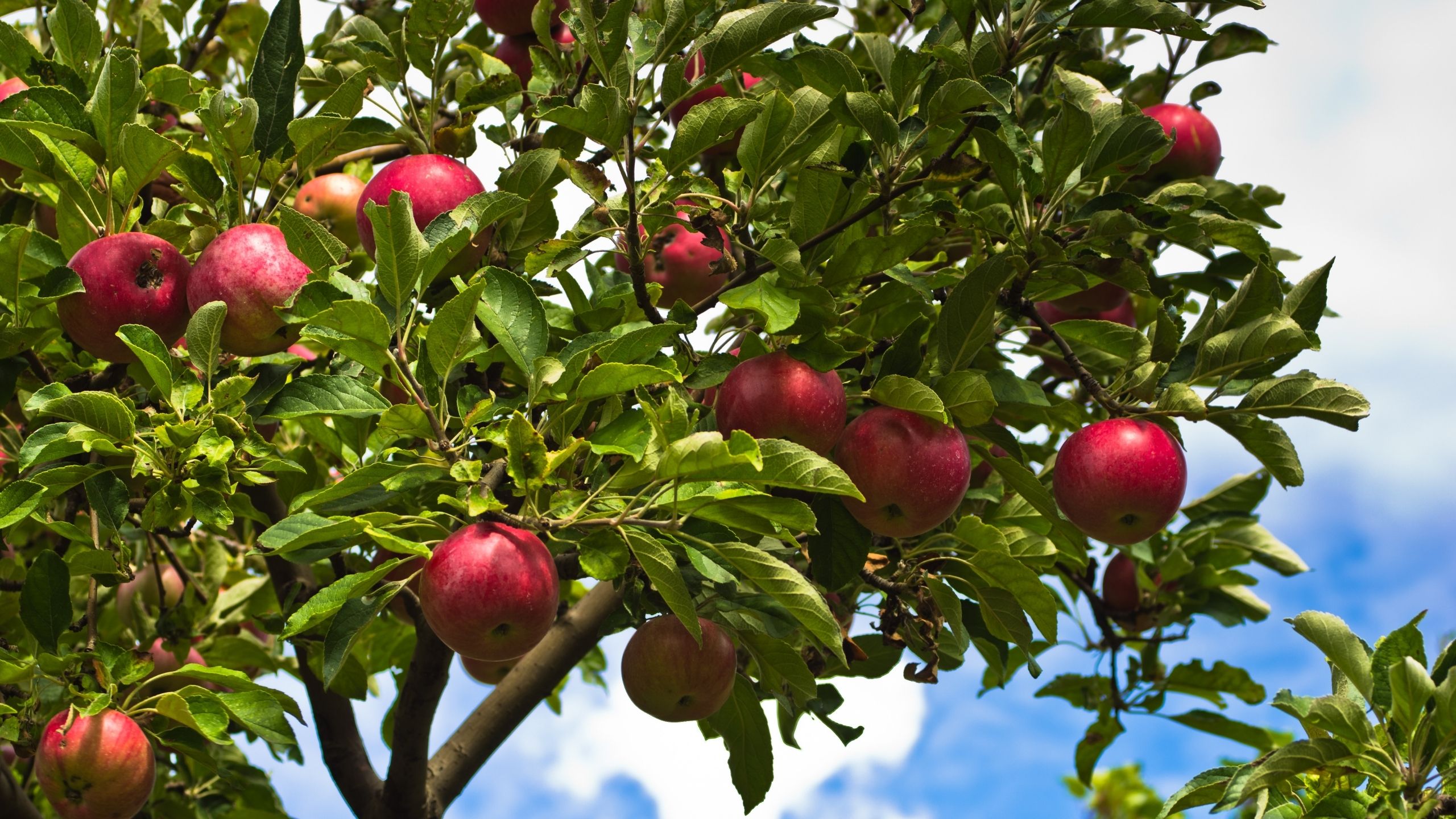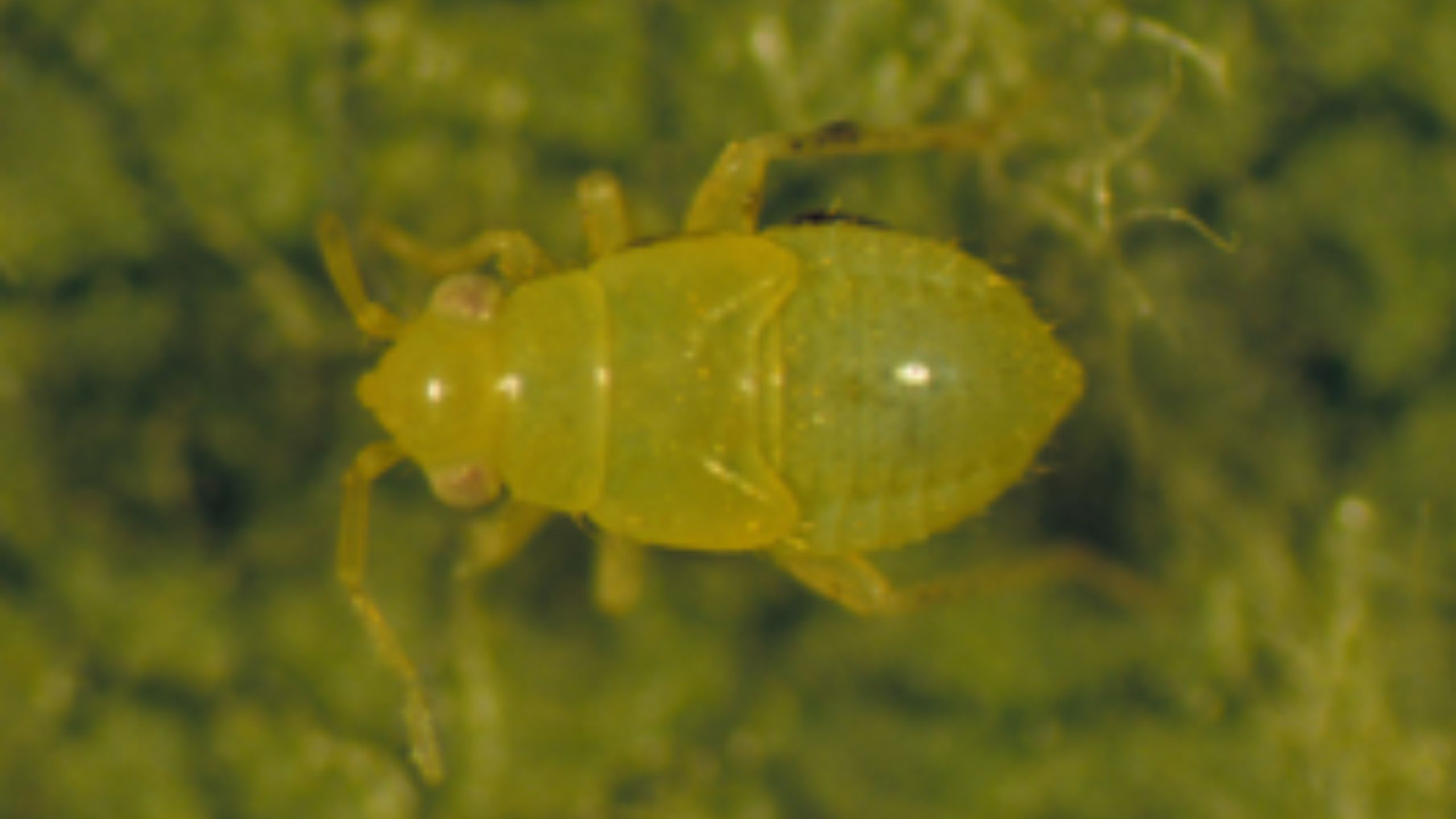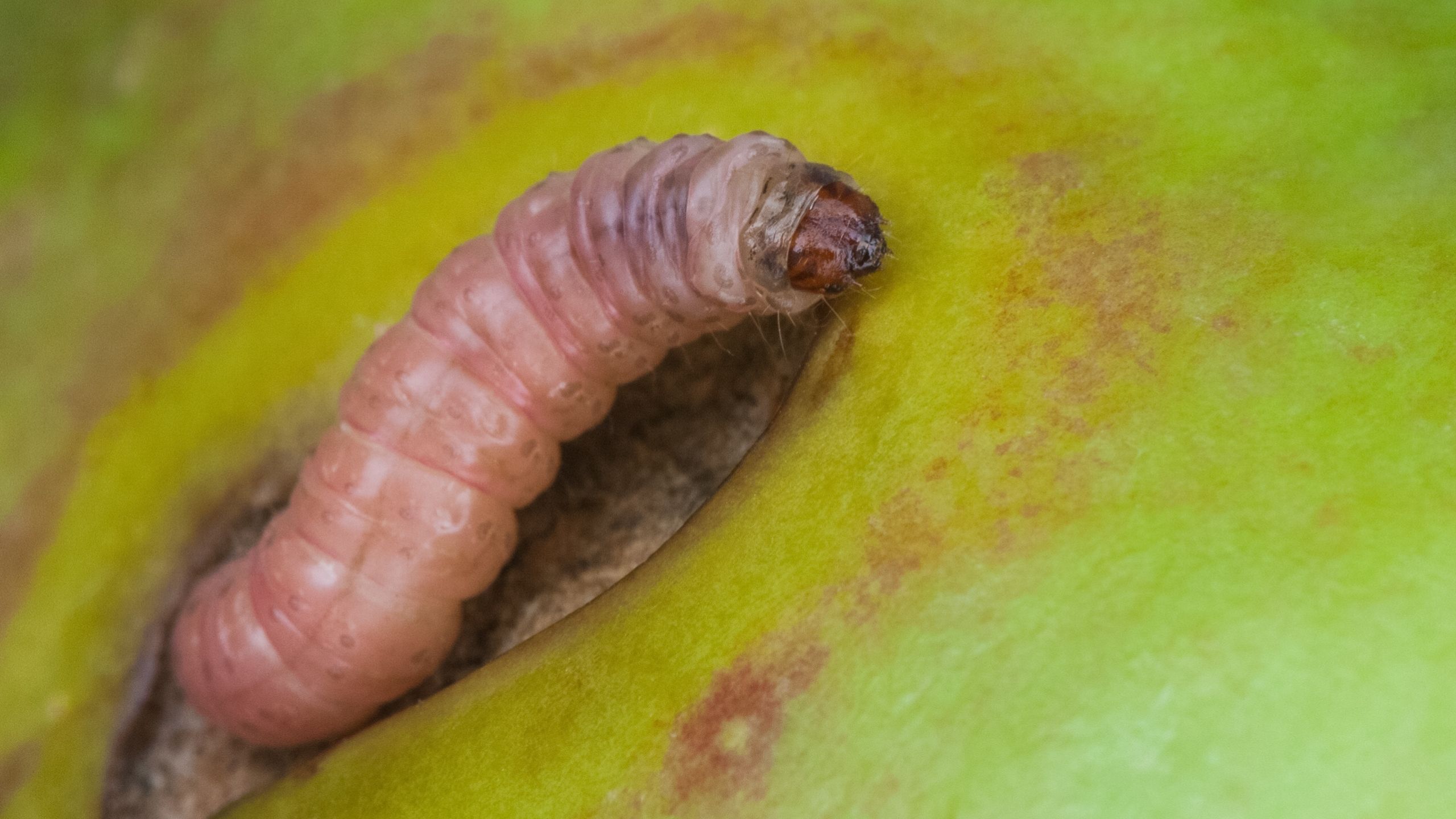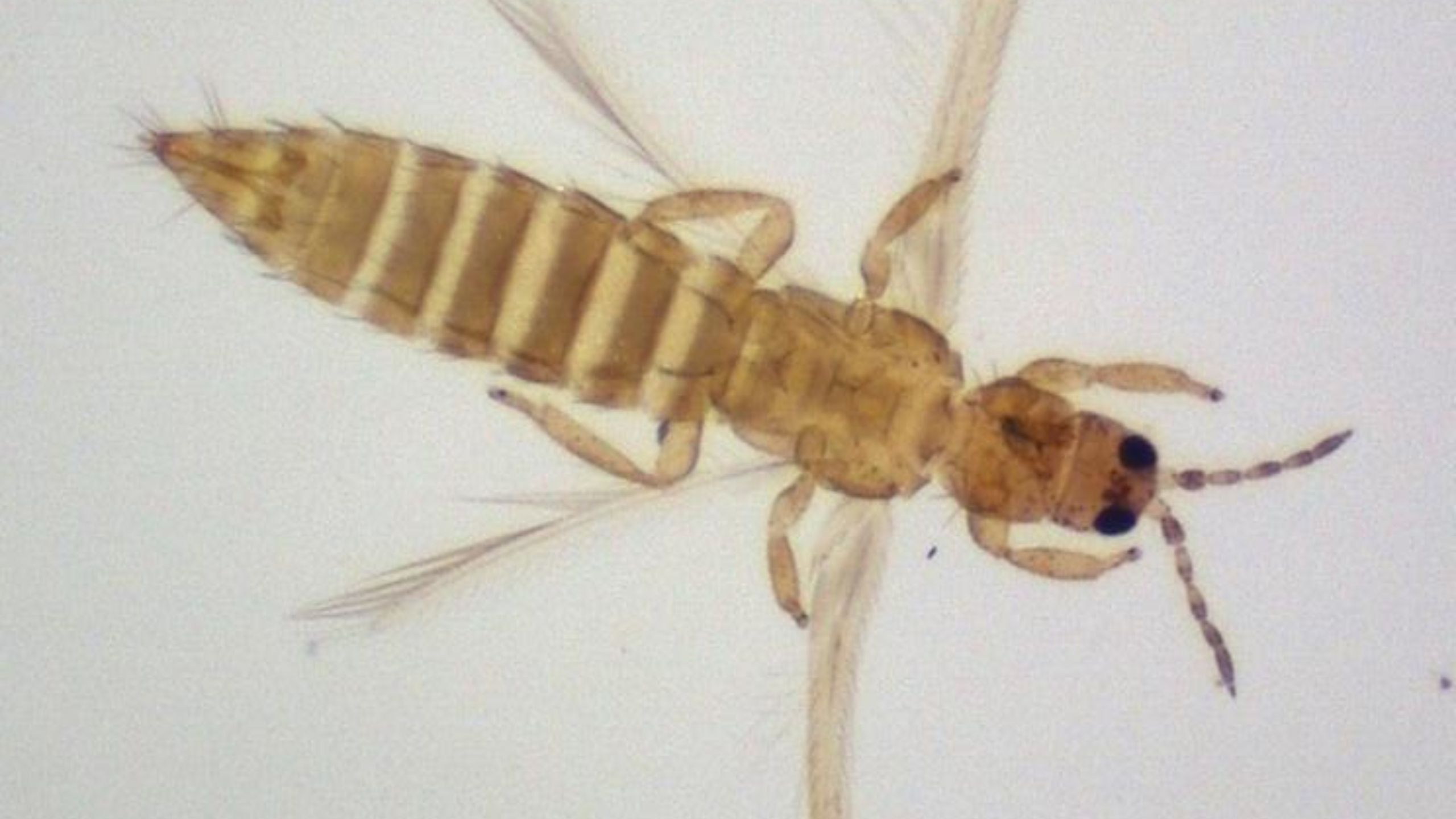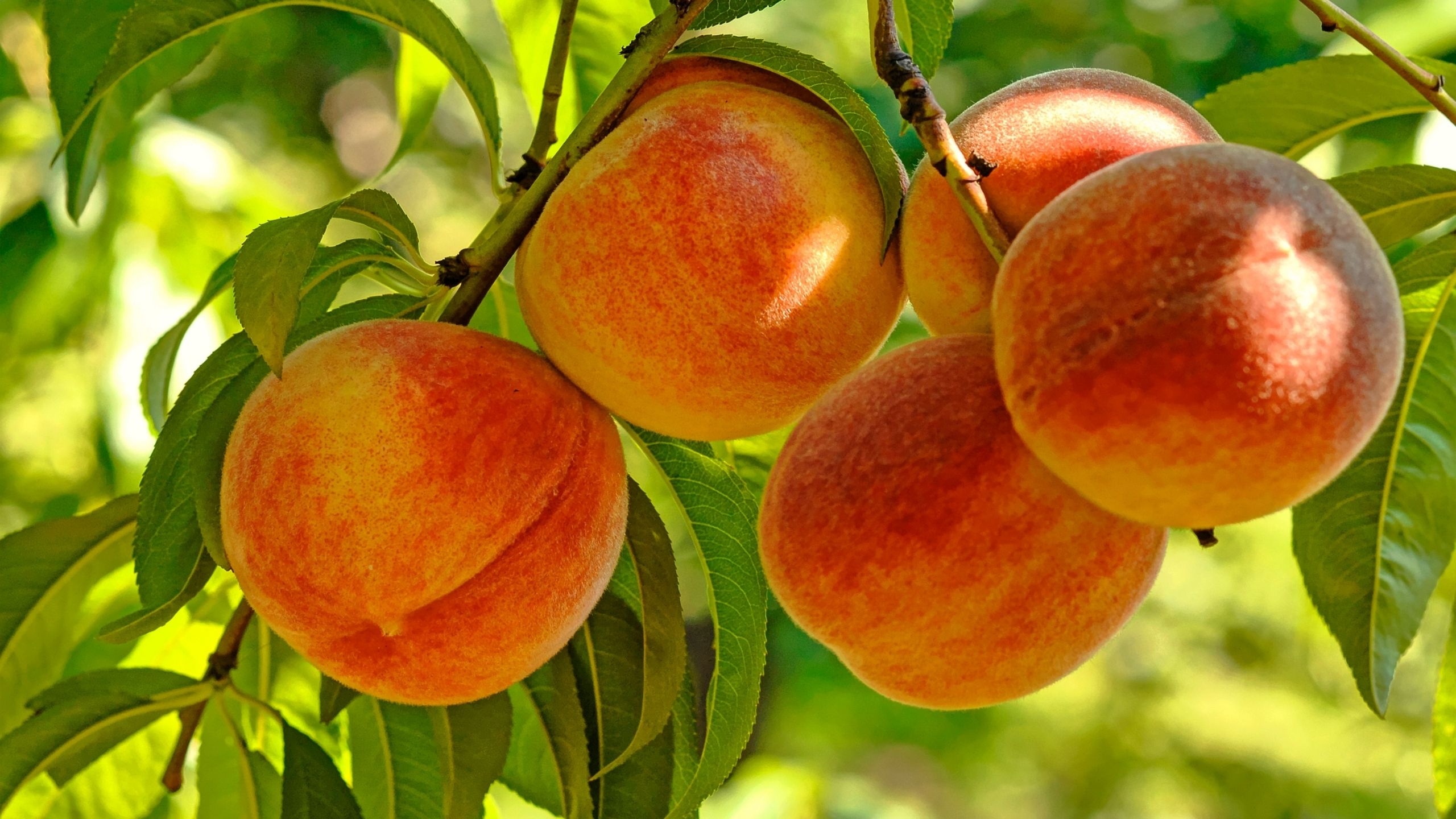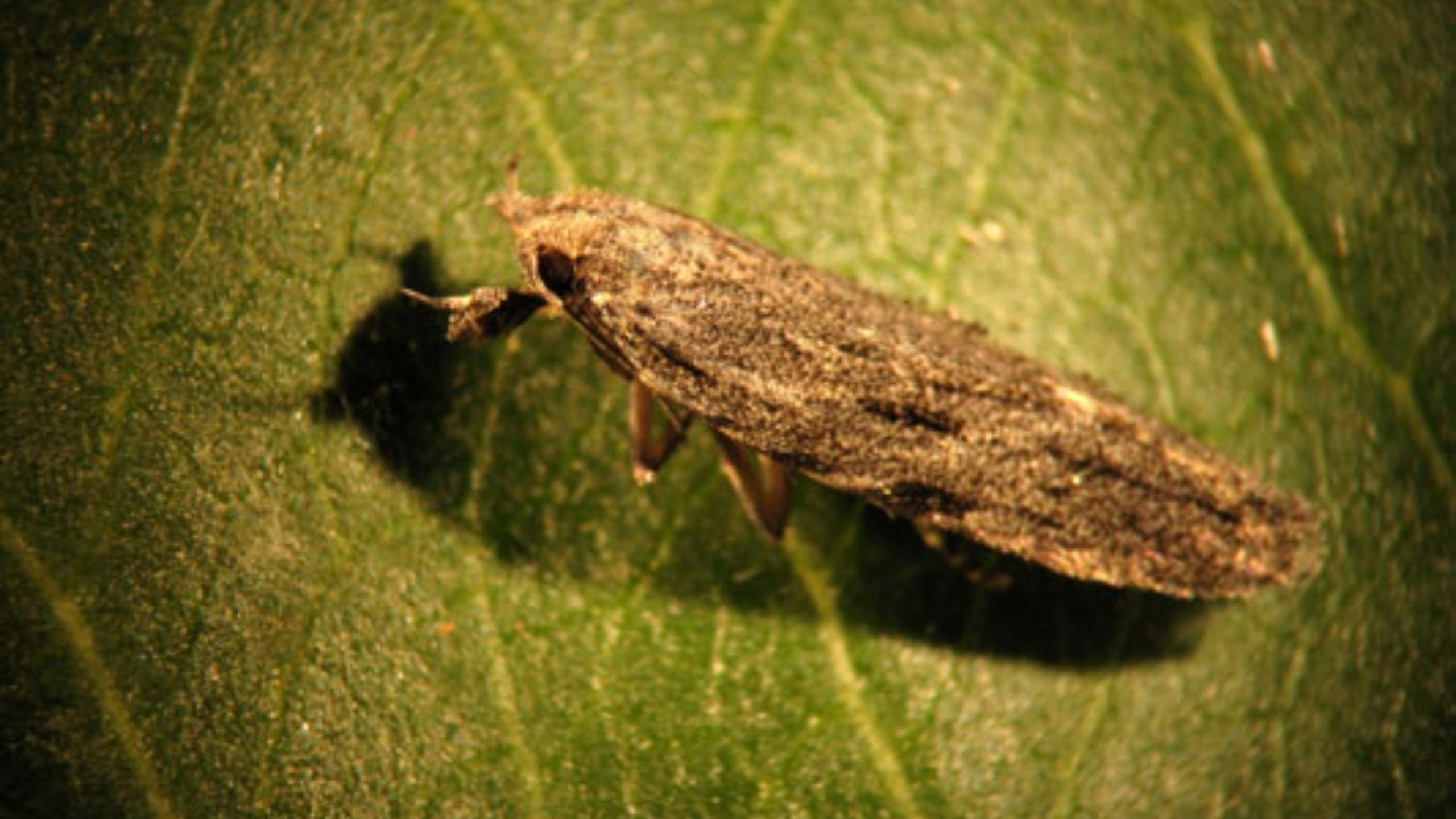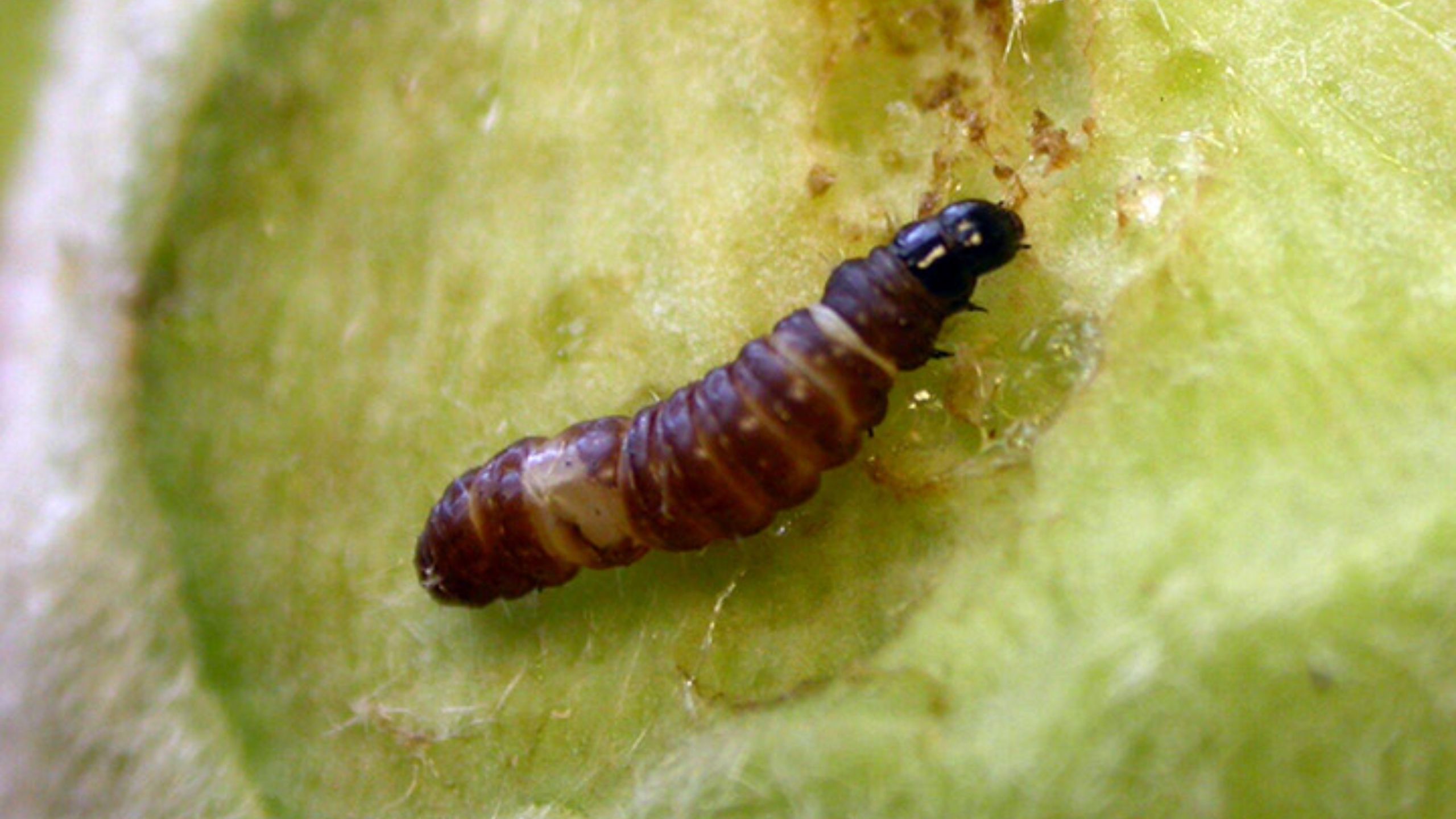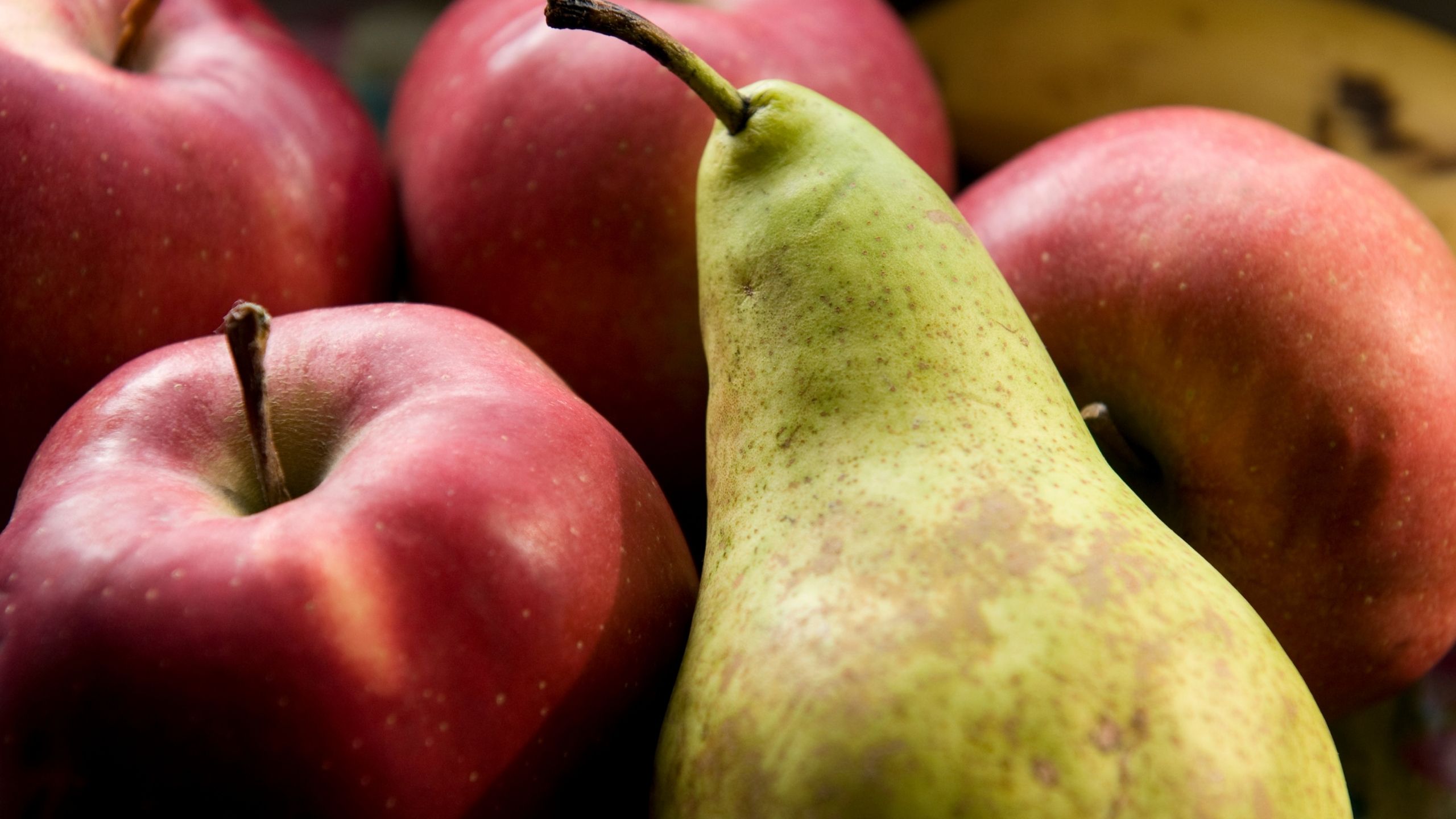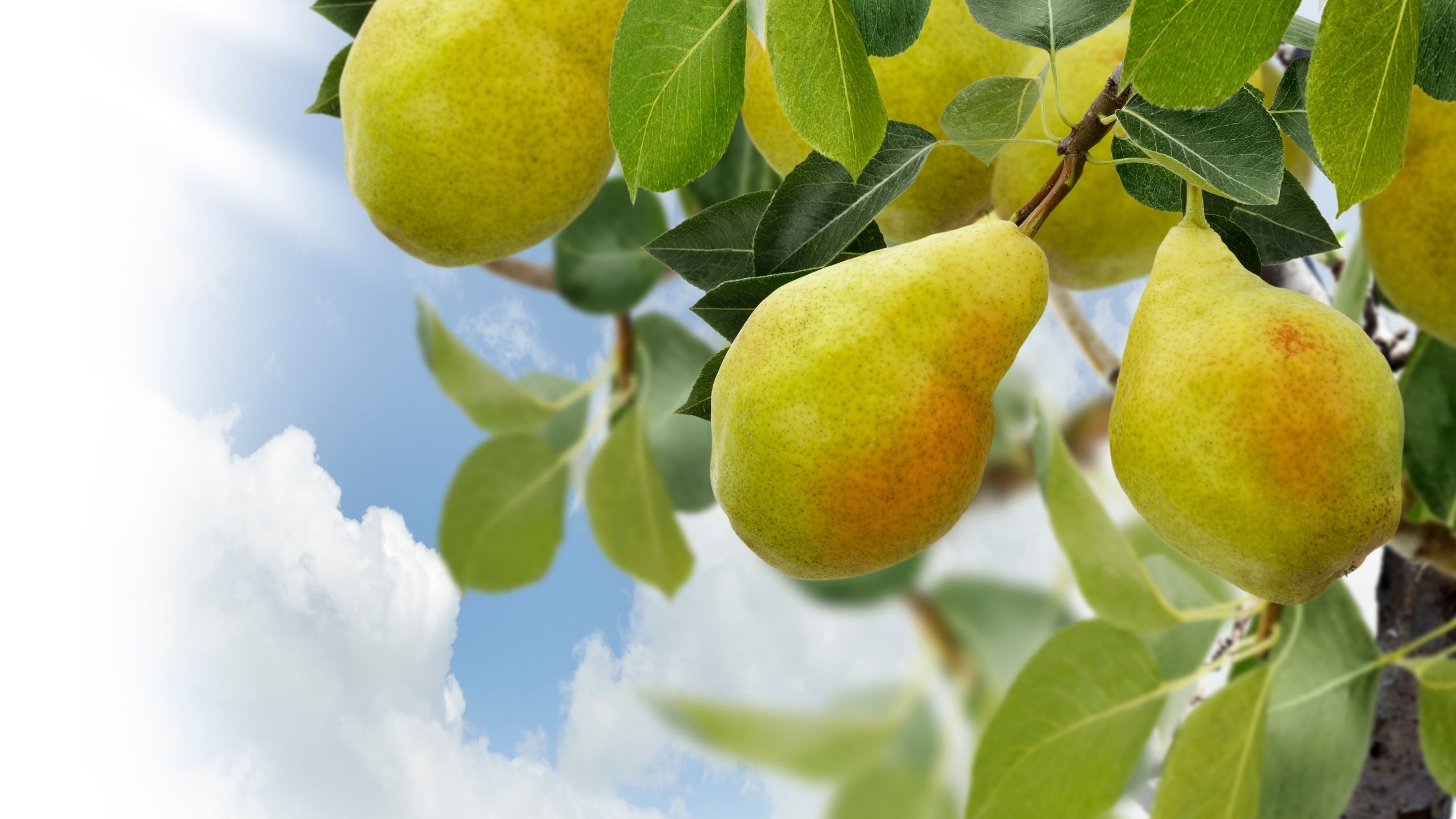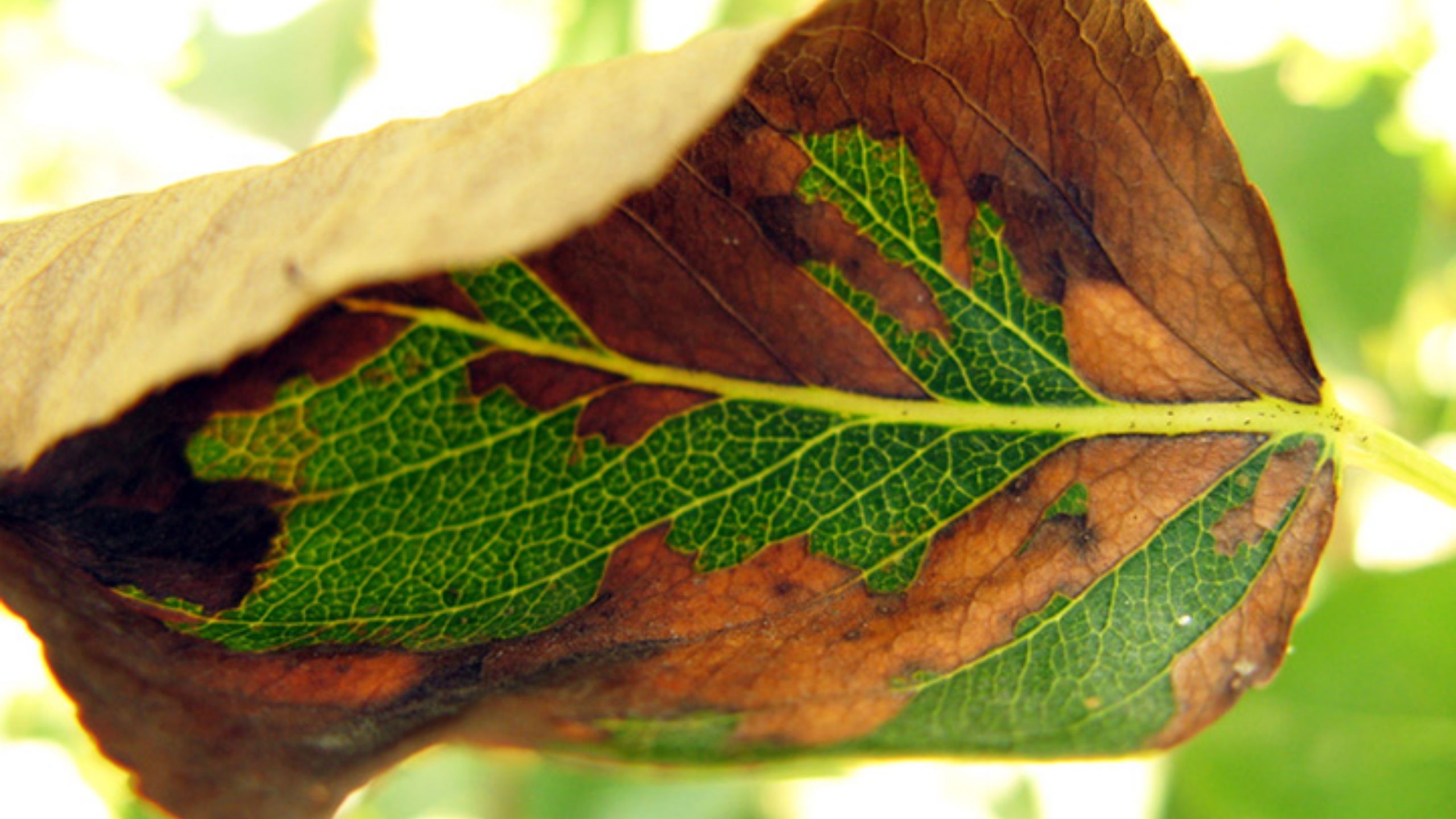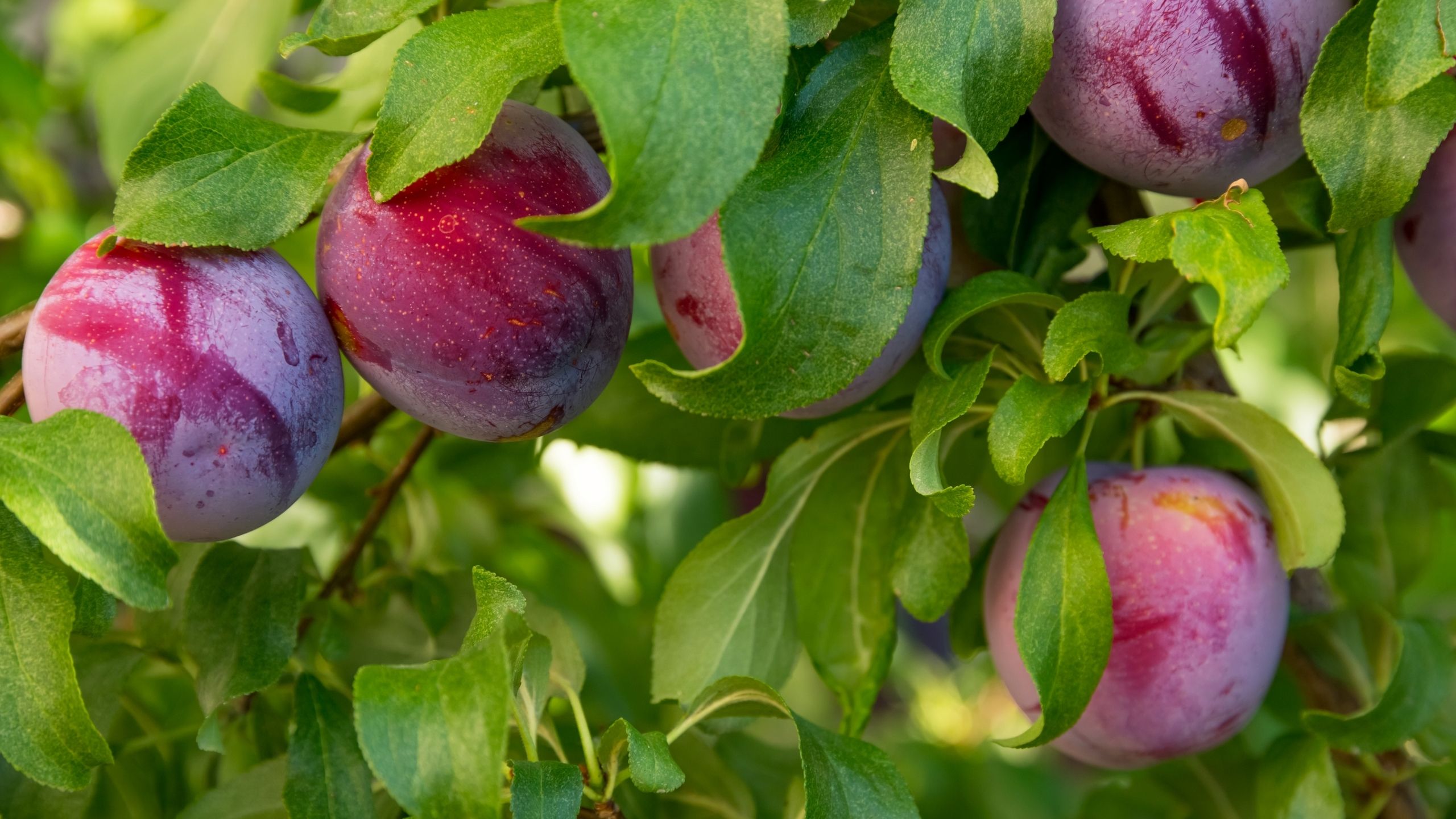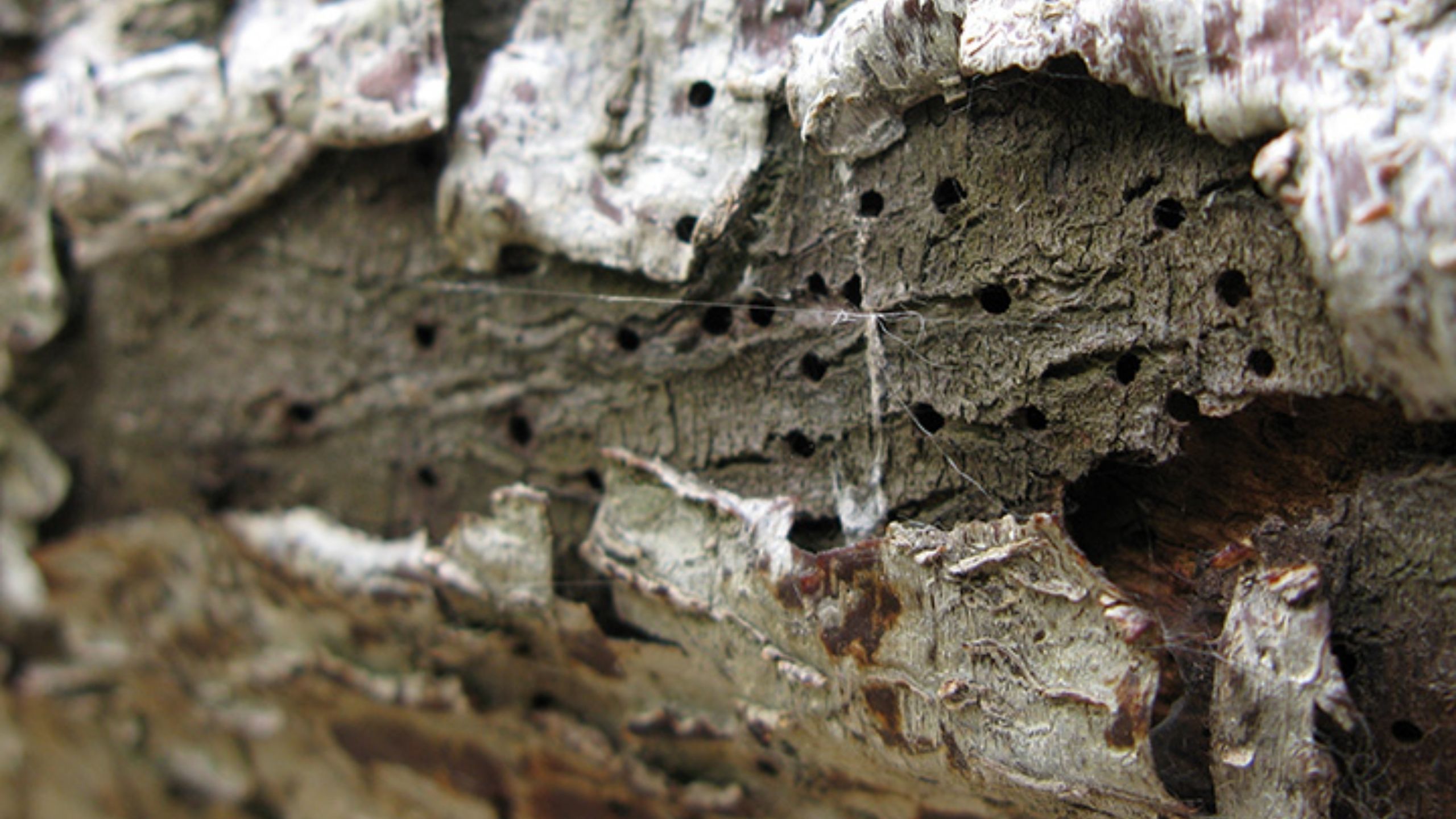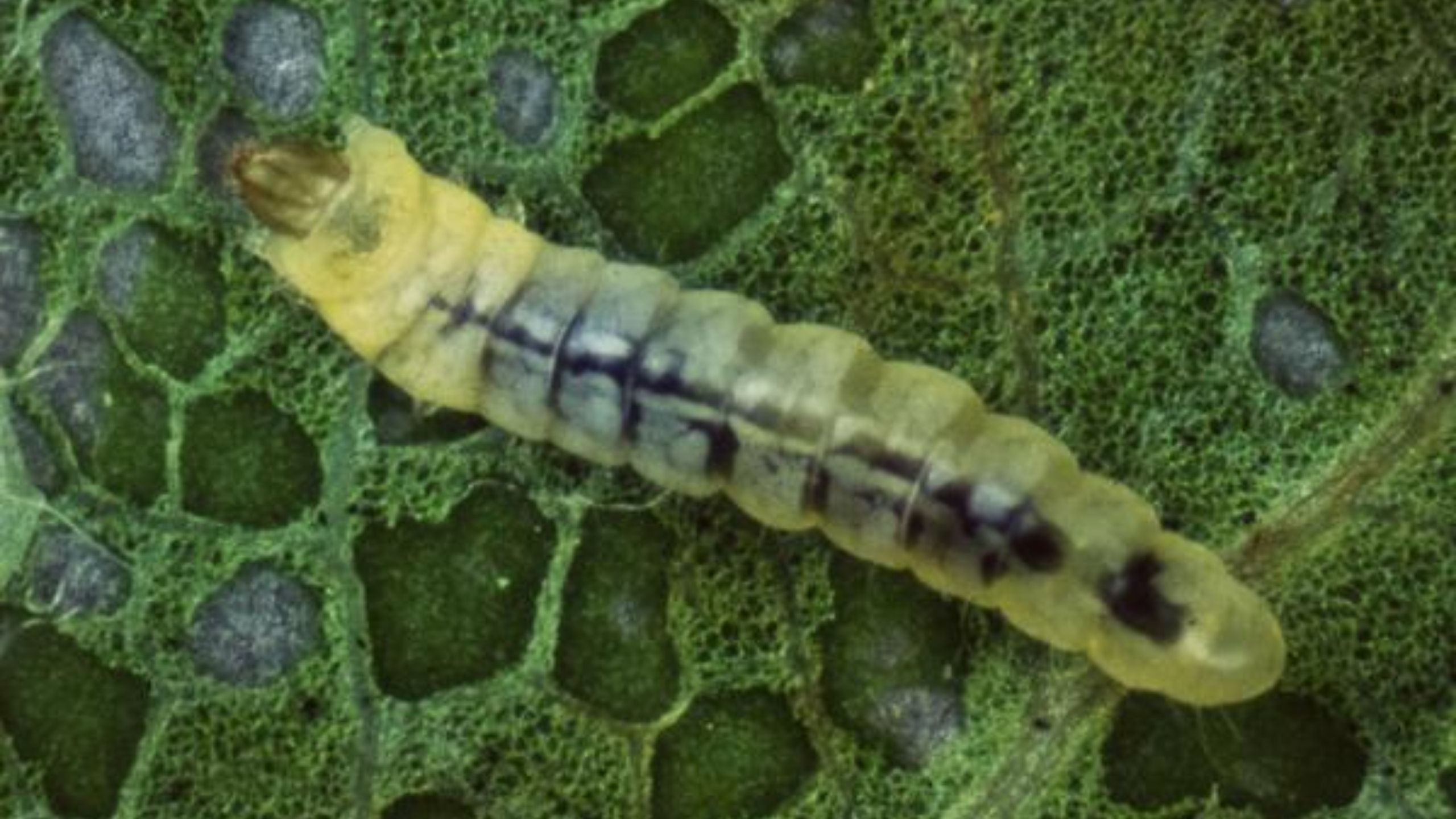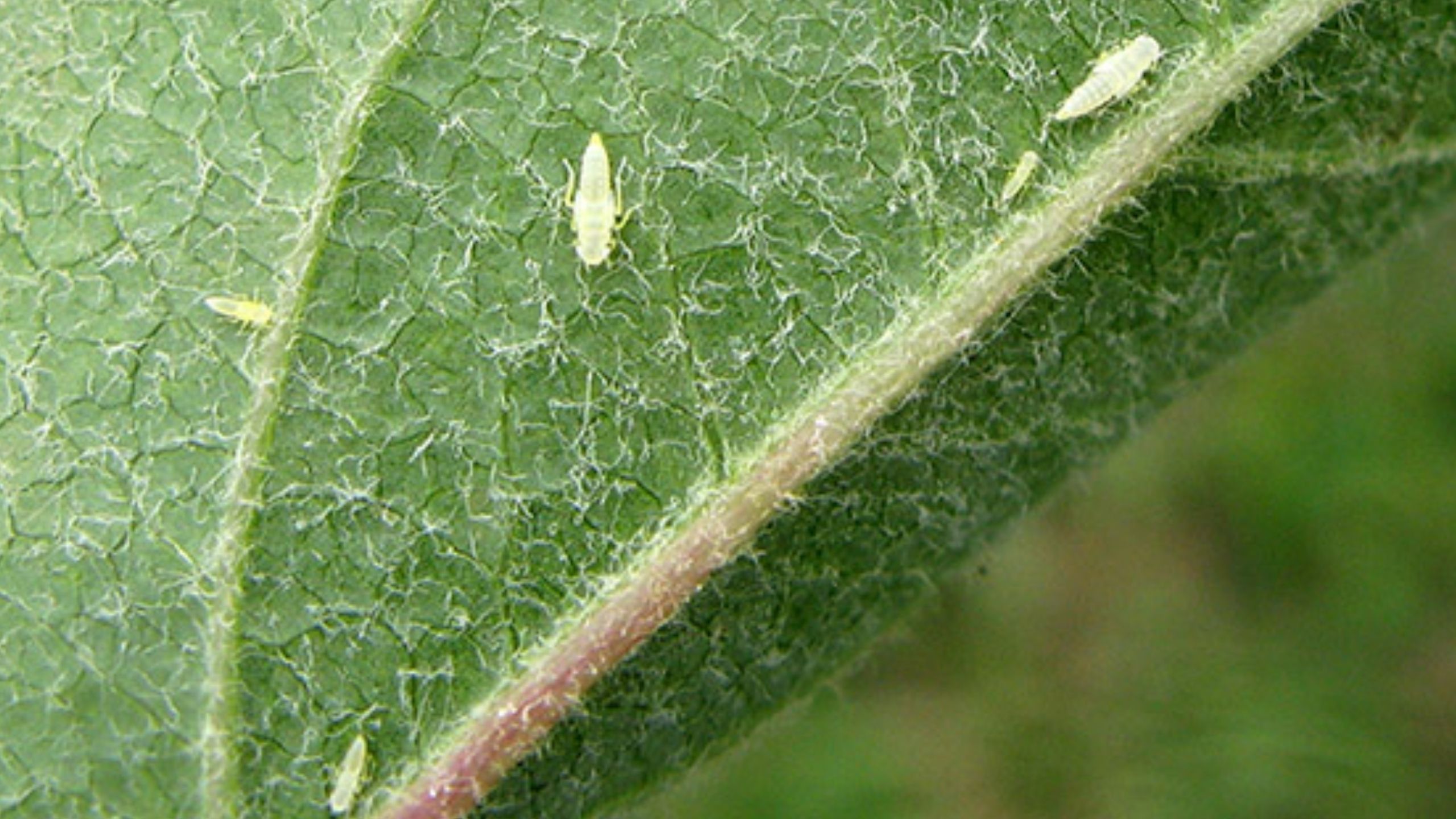Prionus Root Borer
(Prionus californicus)
September 2010
Diane Alston, Entomologist (No longer at USU) • Shawn Steffan, Entomologist • Michael Pace, Box Elder County Extension Agent
Quick Facts

Fig. 1. Adult prionus root borer, female (left) with ovipositor extended, and male (right) with larger antennae for detecting female sex pheromone.
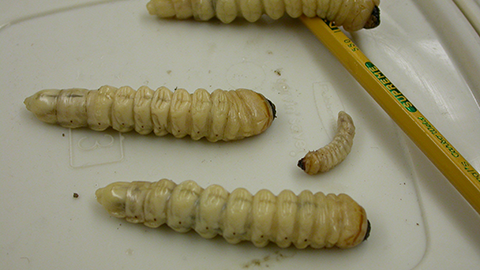
Fig. 2. Prionus larvae of various ages, ¾ - 4¼ inches long.

Fig. 3. Furrows in sweet cherry roots made by prionus larvae.
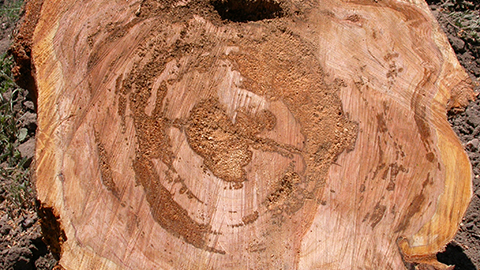
Fig. 4. Cross-section of crown of a sweet cherry tree showing circular pattern of prionus tunnels.
- This long-horned beetle is native to western North America and lives for 3 years or more underground, feeding on tree roots.
- Severe infestations can cause the death of stone fruit trees.
- In northern Utah, the rootborer is found most commonly in sweet cherry and peach orchards growing in sandy soils.
- Insecticide applications have done little to suppress prionus beetle populations.
- An attractive pheromone lure is under evaluation for monitoring, and may also suppress populations in an orchard.
Prionus root borers belong to a family of beetles (Order Coleoptera) commonly known as long-horned beetles (Cerambycidae). The larvae are often referred to as round-headed borers because their body shape is cylindrical.
Several species in the Prionus genus are large, root-boring beetles, and they are widely distributed across the U.S. One species, the California prionus (Prionus californicus), appears to have a particular affinity for stone fruit trees growing in sandy soils of Utah.
Hosts
- Sweet cherry
- Peach
- Apricot
- Other stone fruits
- Cottonwood and other native/ornamental trees and shrubs
Life History
The adult California prionus is a large beetle, ranging in size from 1¾ - 2¼ inches long (45-60 mm). Adults are reddish-brown in color, relatively smooth and shiny with long, deeply notched antennae (Fig. 1). The larvae can be as long as 4¼ inches (108 mm) with a diameter of approximately ¾ inch (18 mm) at the widest point of its body (Fig. 2).
Adults emerge from pupae in the soil in July in northern Utah. The beetles fly at night in search of mates, and eggs are laid in the soil soon thereafter. Young larvae tunnel into the soil to seek out tree roots. Research in a Utah sweet cherry orchard suggests that the younger larvae begin feeding on smaller diameter roots and ultimately reach the tree crown as mature larvae as they move inward and upward along larger roots. The “crown” refers to the region of the trunk (usually at or near the soil level) that represents the transition between below-ground (roots) and above-ground (trunk) growth. In cherries, a greater proportion of the larvae found at the crown were large, mature larvae, while most of the smaller, younger larvae were found in roots. Following 3 or more years of root and crown feeding and upward movement, the insect pupates close to the soil surface. The adults then emerge and seek out mates.
Host Injury
Larvae will chew deep furrows in the roots (Fig. 3), often causing severe reduction in a tree’s ability to take up water and nutrients. The feeding injury is often associated with rot and decay, particularly in wet soils. The colonization of feeding wounds by soil microbes will compound the damage caused by larval tunneling. Larvae feeding in the crown form spiraling furrows which girdle the crown and upper roots (Fig. 4).
Sandy soils appear to favor prionus infestations. Not only is sand likely to increase the ease with which larvae can move about, but it allows rapid percolation of irrigation water. The loss of water from the soil profile combined with the tree’s reduced ability to uptake water (due to prionus feeding) can become major stressors, even for well-established trees.
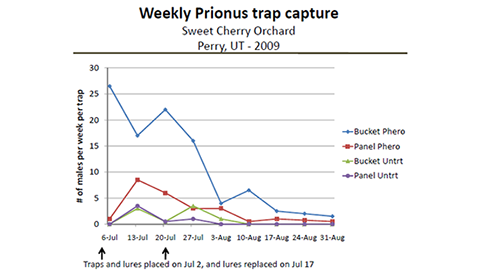
Fig. 6. Weekly capture of prionus males in pheromone- and non-baited bucket and panel traps.
Monitoring
Adult prionus can be monitored using pheromone and light traps. The Prionus californicus sex pheromone has been identified and found to be highly attractive to male beetles. Studies in northern Utah have found that hanging the pheromone lure over a funnel placed in a buried bucket can be an attractive trap to the male beetles (Fig. 5 A and B). In a sweet cherry orchard in 2009, males were captured in traps during July and August; more males were caught in bucket than panel traps, and more were caught in pheromone-bated (Phero) than non-baited (Untrt) traps (Fig. 6.) In 2010, males were caught in pheromone-bated traps from July through September. A commercial pheromone lure is expected to be available soon. If pheromone traps are attractive enough, they may be successful in reducing the local Prionus californicus population (i.e., mass trapping). The beetles typically fly soon after sunset, and they are attracted to lights. Trap-catch may decline after midnight, presumably due to colder temperatures. Adults begin to emerge in early July in northern Utah, and probably 2-4 weeks earlier in southern Utah.
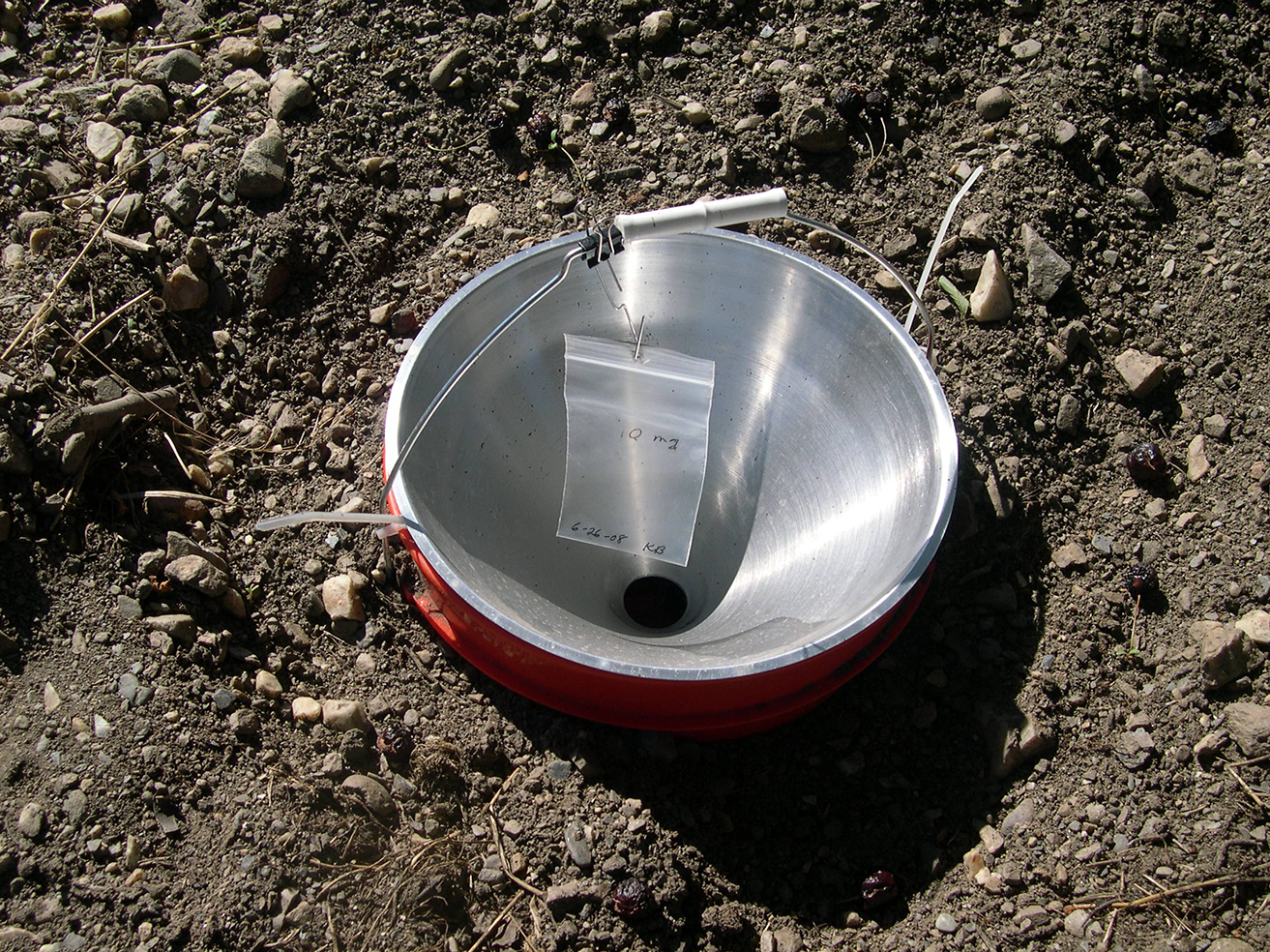
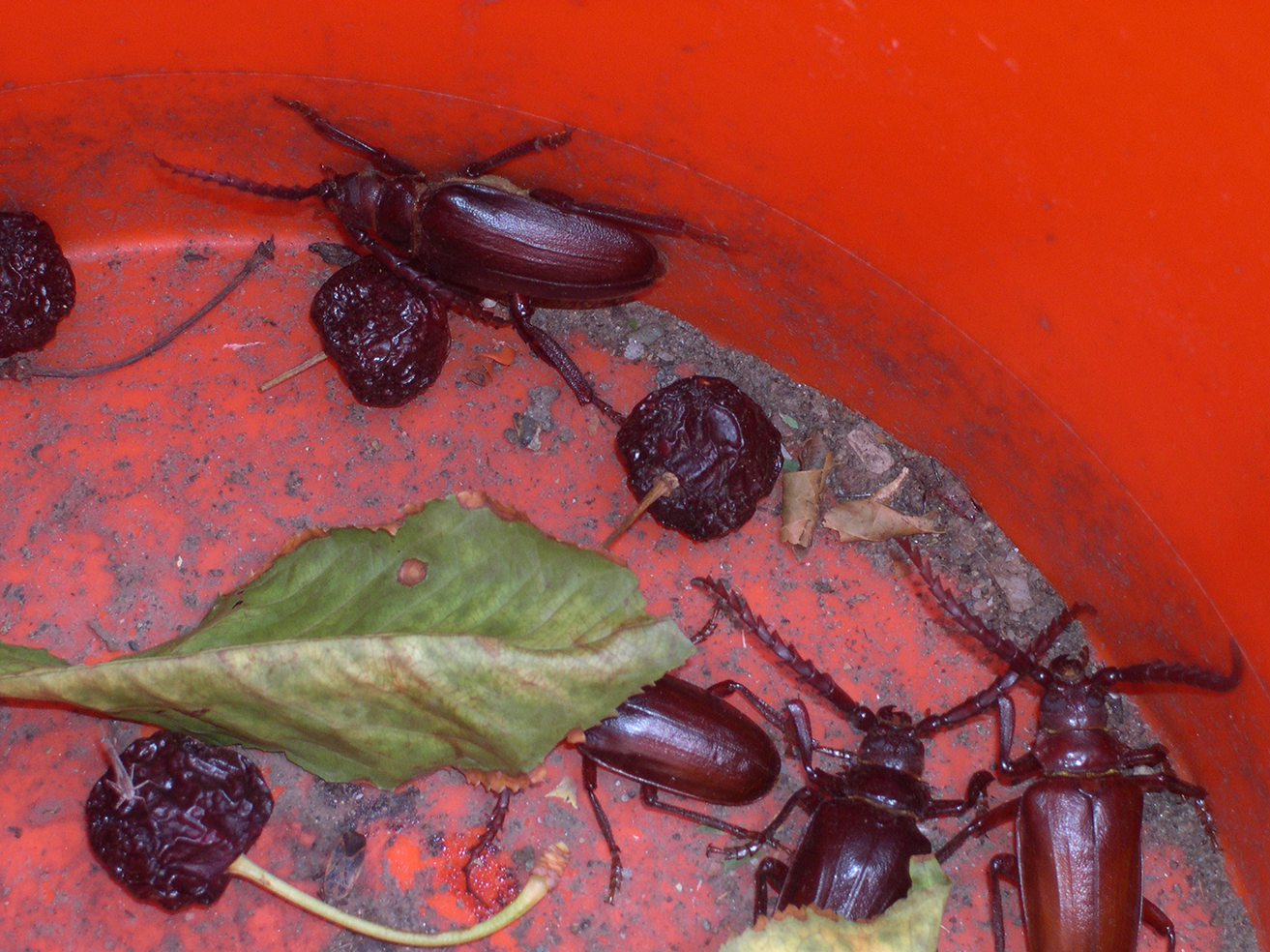
Larvae can be monitored by digging into the soil (6-10 inches deep) around a trunk and looking for darkened, soft areas around the tree crown. Probing into the dark, soft material within the crown or lower trunk may expose larvae. Alternatively, more soil can be unearthed to search for infestations on roots. Usually, infested trees will show signs of limb dieback or a marked decline in overall vigor during hot spells (Fig. 7).
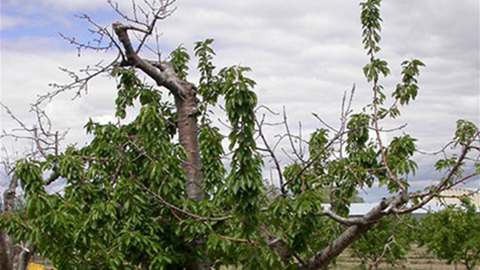
Fig. 7. Sweet cherry tree decline due to prionus infestation.
Management
Currently, there are no registered insecticides for prionus root borers. Several insecticides registered for stone fruit may provide incidental suppression of the adult. Soil fumigation is a pre-planting option where infestations are known to exist, but its cost-effectiveness is questionable. Systemic materials, such as imidacloprid (Admire, Merit, and Bayer Advanced Garden Tree and Shrub Insect Control) may be options, but recent research indicated that this material may be effective only on the younger larvae on roots, and not against the older larvae in the crown or lower trunk. Imidacloprid may suppress the local population if used annually over several years. Some imidacloprid formulations are not registered on bearing fruit trees, so always read the label carefully. Other neurotoxic insecticides, such as chlorpyrifos, permethrin, or carbaryl will kill adults and may inhibit egg-laying when fresh residue is present on the lower trunk and soil, but will not suppress larval populations on the roots.
To prevent prionus infestations, maintain tree health and prevent stress: Watch for canopy dieback or sudden loss of tree vigor. Fallowing an infested field for two or more years, planting annual crops that will be tilled under each year, and avoiding planting stone fruit trees into infested sites are the best options for managing prionus root borer in infested soil. When the pheromone becomes commercially available, mass-trapping males in bucket traps may be an additional control option.


